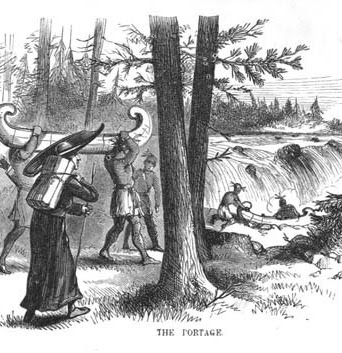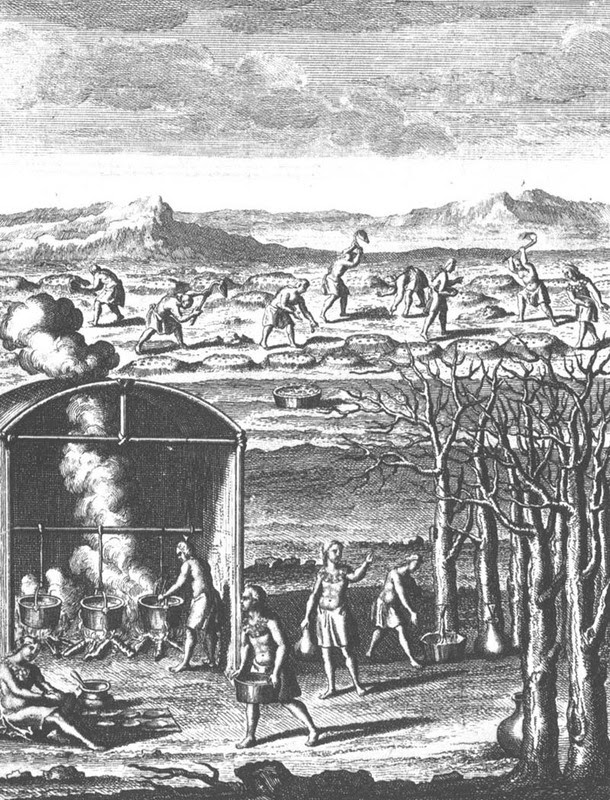Learn
First Nations and the Androscoggin River Valley
The Androscoggin watershed held great importance to the earliest inhabitants of Maine, and later the European settlers who made their homes and businesses here. Learn more about Maine’s native people, their history, and their important connection to the mighty Androscoggin River.

Around 1600 Europeans first ventured up the Kennebec into Merrymeeting Bay and then up the “Pejepscot,” a term then used to label the lowest section of the Androscoggin. In September 1607 Captain Raleigh Gilbert and his men rowed longboats upriver from Brunswick, perhaps as far as Lisbon Falls, encountering a group of Native Americans in canoes, Gilbert was recorded as having said, “Here we found nearly fifty able men, very strong and tall, such as their like before we had not seen. All were painted and armed with bows and arrows.” In 1628 Thomas Purchase established the first permanant trading post along the Androscoggin in Brunswick and and carried out an extensive trade with the Native Americans living in and near the river valley. By the middle of the 17th century however, the friendly relationship between the Native Americans and European settlers began to deteriorate as white settlements took over traditional hunting and fishing grounds of the Wabanaki and the demand for furs strained the native economy by using up time previously spent in search of large game for food and skins. In 1714, a prominent group of Massachusetts men obtained a charter to the “Pejepscot Patent,” a huge tract of land on both sides of the lower Androscoggin River. From Boston the Pejepscot Proprietors promoted the sale of land in and settlement of Brunswick, Topsham, North Yarmouth and other nearby towns. Over the next 100 years European settlers would continue to drive native people from their lands as they slowly established their own settlements along the river. Today, the four Maine Native American tribes are the Maliseet, Micmac, Penobscot, and Passamaquoddy, known collectively as the Wabanaki. Each community maintains its own tribal government, community schools, cultural center and each manages its respective lands and natural resources. Although most of Maine’s Native people belong to one of these four federally recognized groups and reside on tribal lands, other Native people live in towns and cities across the State.
The fast flowing water of the Androscoggin provided the perfect venue for the floating logs down river, and by the early 19th century the lumber and paper industries had established mills along the river. Between 1840-1850 two to three million board feet “run down” to Brunswick yearly. The fast flow of water and waterfalls of the Androscoggin soon were to be harnessed for power for further industrialization of the area. In his 1851 book, Forest Life and Forest Trees, John S. Springer wrote of the abundant manufacturing opportunities on the Androscoggin: “Respecting the water power and privileges on this river, I doubt whether there is a state in the Union that can show so many as we can on the Androscoggin and its tributaries. In the distance of half a mile on the river, at this place (Brunswick), we have [a] forty-one feet fall (three dams across the river), [and] consequently the water may be used in this distance three times. . . . The capacity of the Androscoggin is sufficient for carrying two hundred thousand spindles. . . . All that is requisite to make this river the seat of the most extensive factory operations in the world is capital, and from the superior water power here presented, it is fair to presume that the attention of capitalists may ultimately lead to investments in manufacturing on a magnificent scale.” The stage had been set for the explosive industrial growth of the area during the Industrial Revolution.


![Lewiston_Falls_[Water_Power_of_Maine]](https://mainemill.org/wp-content/uploads/2023/01/Lewiston_Falls_Water_Power_of_Maine.jpg)
